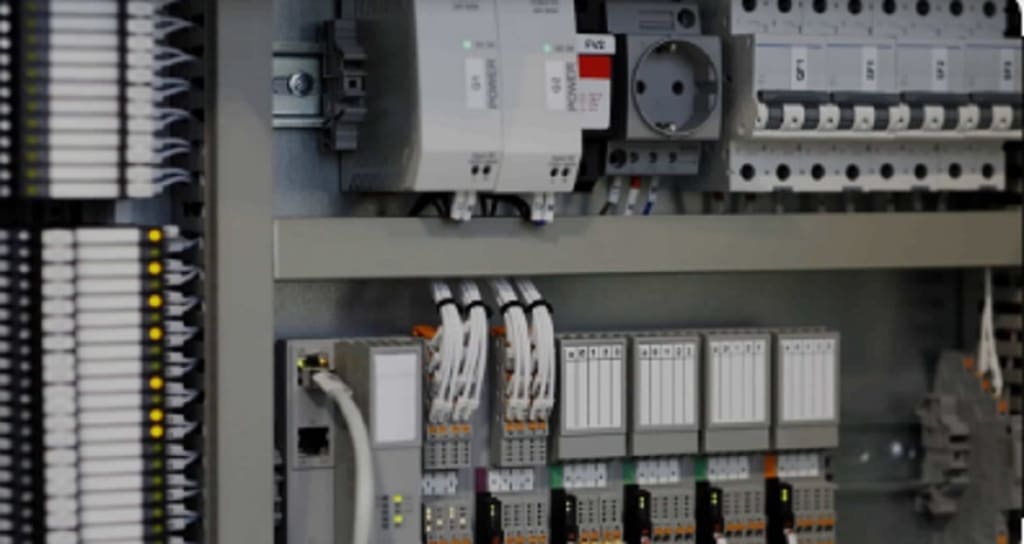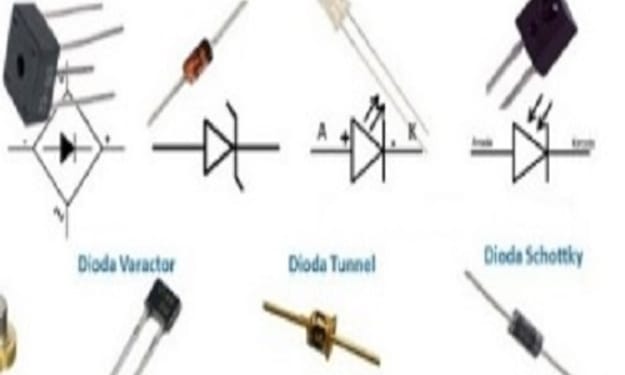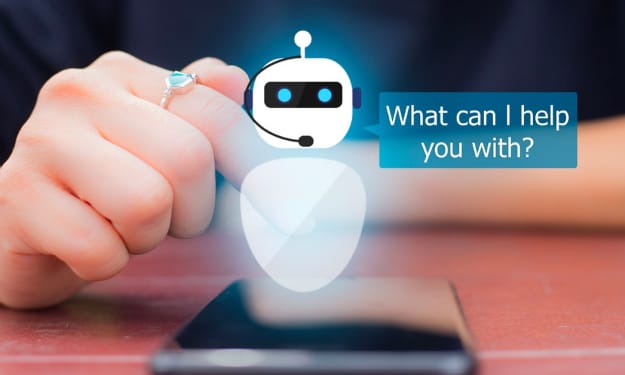The Comprehensive Guide to Diodes: Understanding Their Role and Function
Programmable Logic Controllers (PLCs) are essential components in industrial automation, revolutionizing the way manufacturing processes and control systems operate.

Programmable Logic Controllers (PLCs) are essential components in industrial automation, revolutionizing the way manufacturing processes and control systems operate. This article provides a detailed exploration of PLCs, covering their history, architecture, working principles, types, programming languages, and applications.
What is a PLC?
A Programmable Logic Controller (PLC) is an industrial digital computer designed for the control and automation of manufacturing processes, such as assembly lines, robotic devices, or any activity that requires high reliability, ease of programming, and process fault diagnosis. PLCs are used to automate industrial electromechanical processes, making them more efficient, reliable, and manageable.
History and Evolution
PLCs were first introduced in the late 1960s as a replacement for relay-based control systems. The concept was developed by Dick Morley and his team at Bedford Associates, leading to the creation of the first PLC, the Modicon 084, in 1969. The invention of the PLC marked a significant advancement in industrial automation, offering greater flexibility and efficiency compared to hard-wired relay systems.
Architecture of a PLC
A PLC system typically consists of several key components:
Central Processing Unit (CPU):
The brain of the PLC, executing control instructions stored in its memory.
Manages communication with other components and peripheral devices.
Power Supply:
Provides the necessary power to the PLC system, typically converting AC to DC power.
Input/Output (I/O) Modules:
Interface the PLC with external devices. Inputs can include sensors, switches, and other data sources, while outputs can include motors, valves, and actuators.
Memory:
Stores the control program and operational data. Memory types include volatile (RAM) and non-volatile (EEPROM, Flash).
Communication Ports:
Allow the PLC to communicate with other PLCs, computers, and peripheral devices via various communication protocols.
Programming Device:
Used to create, modify, and load control programs into the PLC. Programming devices can be dedicated units or standard computers with specialized software.
Working Principles
PLCs operate based on a cyclic execution of programs, commonly referred to as the scan cycle. The scan cycle consists of the following steps:
Reading Inputs:
The PLC reads the status of all input devices and stores this information in the input memory.
Executing the Program:
The CPU executes the control program, processing the input data according to the programmed instructions and logic.
Updating Outputs:
Based on the program execution results, the PLC updates the status of the output devices.
Housekeeping Tasks:
The PLC performs internal diagnostics and communication tasks.
This cyclic process ensures that the PLC can respond to changes in input conditions and update outputs accordingly in real-time.
Types of PLCs
PLCs can be classified based on their size, capabilities, and applications:
Compact PLCs:
Also known as fixed PLCs, these units integrate the CPU, power supply, and I/O modules into a single housing.
Ideal for small to medium-sized applications with limited I/O requirements.
Modular PLCs:
Consist of separate modules for the CPU, power supply, and I/O, allowing for greater flexibility and scalability.
Suitable for larger, more complex applications with extensive I/O needs.
Rack-mounted PLCs:
Feature a rack or chassis to hold various modules, including the CPU, I/O, communication modules, and specialty modules.
Used in large-scale industrial applications requiring high levels of control and integration.
PLC Programming Languages
Programming a PLC involves creating a control program that defines the logic and sequence of operations. The International Electrotechnical Commission (IEC) standard 61131-3 specifies five programming languages for PLCs:
Ladder Logic (LD):
Resembles electrical relay logic diagrams.
Widely used and easily understood by technicians and engineers familiar with relay control systems.
Function Block Diagram (FBD):
Uses graphical blocks to represent functions and their interconnections.
Suitable for complex control systems and process control.
Structured Text (ST):
A high-level textual language similar to Pascal.
Ideal for complex algorithms and data manipulation.
Instruction List (IL):
A low-level textual language similar to assembly language.
Provides fine-grained control over the PLC operations.
Sequential Function Chart (SFC):
Represents control logic as a series of steps and transitions.
Used for sequential control applications and process automation.
Applications of PLCs
PLCs are used across various industries and applications due to their versatility, reliability, and ease of programming. Key application areas include:
Manufacturing:
Automating assembly lines, robotic arms, and machine tools.
Ensuring precise control and coordination of manufacturing processes.
Process Control:
Regulating variables such as temperature, pressure, and flow in chemical, petrochemical, and food processing industries.
Providing continuous monitoring and control to maintain process stability and product quality.
Automotive Industry:
Controlling production lines, robotic welding, painting, and assembly operations.
Enhancing production efficiency and consistency.
Building Automation:
Managing HVAC systems, lighting, elevators, and security systems in commercial and residential buildings.
Improving energy efficiency and occupant comfort.
Water and Wastewater Treatment:
Monitoring and controlling pumps, valves, and treatment processes.
Ensuring compliance with environmental regulations and operational efficiency.
Energy Management:
Controlling power generation, distribution, and consumption.
Integrating renewable energy sources and optimizing energy use.
Transportation:
Automating railway systems, traffic lights, and airport baggage handling systems.
Enhancing safety, efficiency, and reliability in transportation networks.
Advantages of PLCs
PLCs offer numerous benefits that make them the preferred choice for industrial automation:
Flexibility:
Easily reprogrammed to adapt to changes in production processes or system requirements.
Reliability:
Designed for harsh industrial environments, with robust hardware and error-checking capabilities.
Scalability:
Modular and expandable to accommodate growing or changing application needs.
Ease of Use:
User-friendly programming environments and extensive documentation.
Integration:
Supports various communication protocols for seamless integration with other industrial systems and devices.
Cost-Effective:
Reduces wiring complexity and maintenance costs compared to traditional relay-based systems.
Future Trends
The field of PLCs continues to evolve with advancements in technology and industry demands. Key future trends include:
Industrial Internet of Things (IIoT):
Integration of PLCs with IIoT platforms to enable real-time data collection, analysis, and remote monitoring.
Enhancing predictive maintenance, operational efficiency, and decision-making.
Cybersecurity:
Developing robust security measures to protect PLCs and industrial networks from cyber threats.
Ensuring the integrity and availability of critical control systems.
Advanced Analytics and Machine Learning:
Leveraging data analytics and machine learning to optimize process control and predict equipment failures.
Enhancing automation and operational intelligence.
Edge Computing:
Implementing edge computing solutions to process data locally on the PLC, reducing latency and improving real-time control.
Enabling faster and more reliable decision-making at the edge of the network.
Sustainability:
Focusing on energy-efficient and environmentally friendly automation solutions.
Supporting sustainable manufacturing practices and reducing carbon footprints.
Conclusion
Programmable Logic Controllers (PLCs) are indispensable in modern industrial automation, providing reliable, flexible, and efficient control solutions across a wide range of applications. As technology advances, PLCs are poised to play an even more significant role in the future of automation, driving innovation and efficiency in industrial processes. Understanding the principles, types, programming languages, and applications of PLCs is crucial for anyone involved in industrial automation and control systems.
About the Creator
Kelas Teknisi
Meet our expert in electrical power systems, renewable energy, electronics, and cutting-edge technology, who shares their extensive knowledge and experience on Kelasteknisi.com.
Enjoyed the story? Support the Creator.
Subscribe for free to receive all their stories in your feed. You could also pledge your support or give them a one-off tip, letting them know you appreciate their work.






Comments
There are no comments for this story
Be the first to respond and start the conversation.